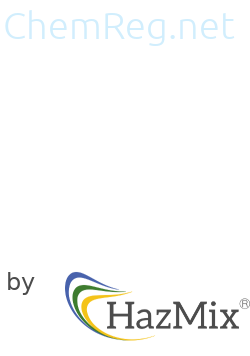Vision
The Challenge that the Chemicals’ industry faces.
Over the past four decades we have seen an unprecedented increase in chemicals’ regulations and the emergence of the concept of the “precautionary principle”. As the cost of doing business ever increases the outlook for the chemicals’ industry looks increasingly challenging. Mark describes the reason for these developments and how we may win back that trust.
Why did we lose the trust of stakeholders?
The global chemical business has grown from $171 billion in 1970 to $3.4 trillion in in 2016 and is expected to be $6.3 Trillion by 2030. This growth has been accompanied by an increasing number of transport and safety incidents involving chemicals which has led to a raised societal awareness of the health and environmental risks of chemicals and the development of Global Chemical management programs, conventions and institutions at the International level and Governmental Laws and Institutions at the National level. This increased volume of the chemical industry combined with complexity of regulation led to the global recognition at the World Summit in Johannesburg in 2002 of the need to “use and produce chemicals in ways that do not lead to significant adverse effects on human health and the environment”. This objective was reaffirmed in Rio de Janeiro in 2012 and led to the development of the Global Harmonised System (GHS) – a single worldwide system for classifying and communicating the hazardous properties of industrial and consumer chemicals that sits alongside the UN ‘Transport of Dangerous Goods’ system.
A good plan but what went wrong?
Unfortunately, as a compromise to accommodate existing laws and systems, GHS was conceived as a Modular system allowing for phased-in implementation of so called “building blocks” and the use of “adaptations” to recognise existing legislative requirements. As a consequence, implementation of GHS has been delayed and reality falls short of the original vision of a single global system since there are different hazard communication requirements, rules for classification and formats for Safety data Sheets (SDS) and labels in different countries. For any chemicals’ business trading in the Global market it is a growing challenge to maintain awareness of these complex regulatory requirements and to comply with them.
While GHS and associated regulatory schemes promise to make the world a safer place there is growing evidence that a combination of myopic share-value driven investment strategies and sharp business practices, such as plagiarising other companies SDS without assessing hazards and under classifying hazardous products to reduce transport costs is undermining their effectiveness.
Where does the “Precautionary Principal” and REACH fit into things?
Within the EU the World Summit “2020” vision was implemented in the form of the EU REACH (EC 1907/2006) regulation. REACH aims to improve the protection of human health and the environment through the better and earlier identification of the intrinsic properties of chemical substances and has four processes - Registration, Evaluation, Authorisation and Restriction of Chemicals. REACH is based upon the concept often referred to as the “Precautionary Principle” i.e. that chemicals are regarded as hazardous unless proven otherwise. REACH is by far the most complex piece of legislation implemented within the EU and flows into other Community Health, Safety and Environment as well as EU national legislation. Its success has also triggered the development of an increasing number of new regulatory schemes/ amendments of existing regulations (China, Korea, Malaysia, Russia, Taiwan and Turkey). These are often referred to as being “REACH-like” since they have several features in common with EU REACH, such as having a notification/registration component; notification of new chemicals, registration/or not of existing chemicals, inventory-based system combined with REACH-like elements, periodic reporting of volumes as well as data requirements depending on volume or hazard. However, these systems also contain significant differences so are far from being globally harmonised. While REACH-like regulations drive the generation of quality hazard information on chemicals and establishes conditions for their safe use, they add to the burden already imposed by the hazard communication (GHS) requirements and are a challenge for SMEs and micro-enterprises to comply with.
The outlook and how can we achieve the Vision of a safer world?
Firstly, industry must recognise that it will have to work to regain the trust of stakeholders and that this trust is fragile. In a disperse global market with complex supply chains and sizes of enterprises this will be a major challenge. Secondly, the “Precautionary Principle” is here to stay and will require rigorous enforcement if it is not to be simply a restricted to large enterprises with the resources to follow it through. Thirdly, there is a need to generate and share expensive hazard data and classifications on a global basis and in this regard the proliferation of national classification databases with erroneous entries and misclassifications is counter-productive. Fourthly, regulators will have to enforce high standards of communication through the supply chain in the form of SDS and labels if SMEs and microenterprises are to be included in this journey. And lastly, if this is all to work then business will have to raise its game and seriously contribute to the raising of awareness and compliance.
In this regard Global MSSD Ltd is setting a new standard.
In terms of the production of high quality SDS in the language of the user we are lowering the cost so that even SMEs and micro-enterprises can afford them. A combination of “Big data” initiatives utilising chemical regulations properties data via the internet with the use of artificial intelligence-based systems to interpret this data and regulatory requirements will at last put quality, compliant SDS within the reach of small companies. We call the product HazMix, a pay-as-you-go online product that is free to use, with a very low cost to produce SDS.
In terms of awareness of regulations, the only recourse to companies to date has been to subscription to expensive regulatory data providers. This is a thing of the past since ChemReg gives free access to over 27,000 global chemical regulations in 130 countries and allows both searching within regulations in any language and translation into over 113 languages.
Our vision is to work with governmental agencies around the world to promote regulatory awareness and compliance thereby ensuring the sustainable growth of the chemical industry in the future.
As a first step in this journey, we have agreed to work with UNEP - UN Environment Programme on promoting awareness and use of ChemReg within the member countries of UN. Hopefully this will be the first of many such collaborations.

















